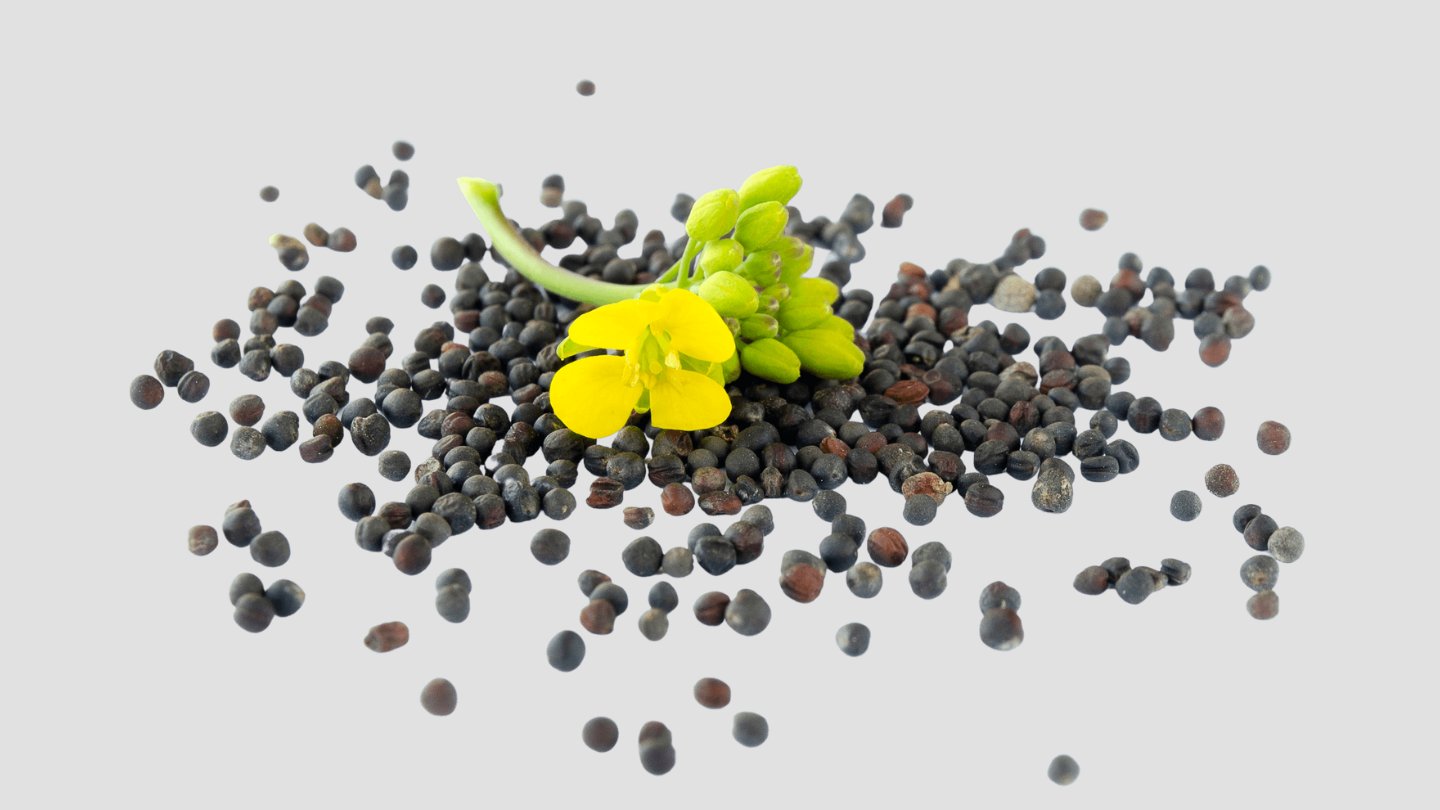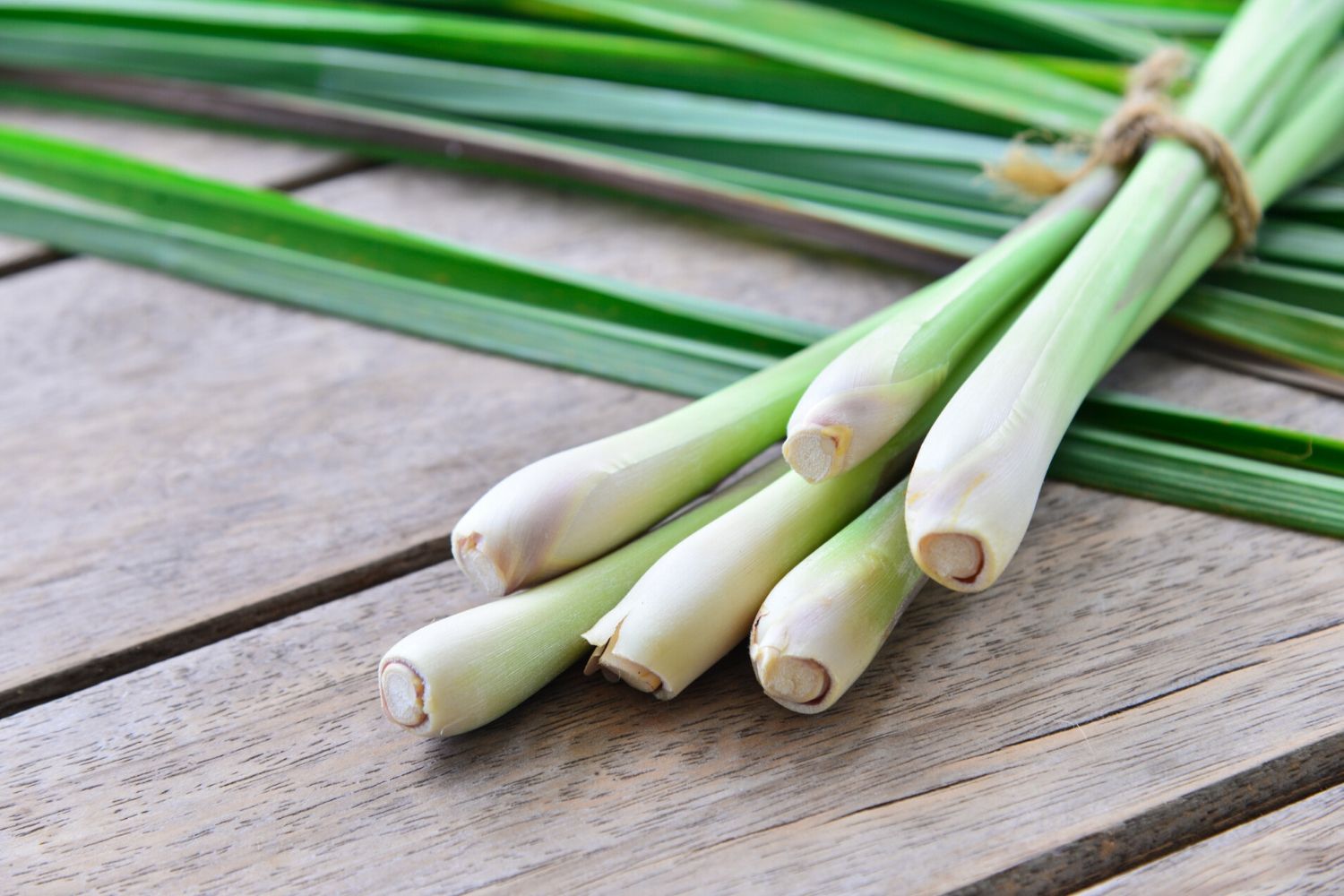Home>Garden Essentials>What Is A Rapeseed


Garden Essentials
What Is A Rapeseed
Modified: March 15, 2024
Learn all about rape seed, also known as garden seed. Discover the uses, benefits, and cultivation tips for this versatile plant.
(Many of the links in this article redirect to a specific reviewed product. Your purchase of these products through affiliate links helps to generate commission for Storables.com, at no extra cost. Learn more)
Introduction
Welcome to the fascinating world of rape seed! In this article, we will delve into the depths of this versatile plant, exploring its definition, history, cultivation, uses, nutritional value, health benefits, and even its industrial applications. Prepare to be amazed by the incredible properties and benefits of this little-known seed.
Rape seed, scientifically known as Brassica napus, is a member of the mustard family, Brassicaceae. It is commonly cultivated for its oil-rich seeds, which have a distinctive yellow hue. These seeds are commonly referred to as canola in North America and oilseed rape in Europe.
Originating from the Mediterranean region, rape seed has a long and rich history. Its cultivation dates back thousands of years, with evidence of its domestication found in ancient civilizations.
Today, rape seed is grown in various parts of the world, including North America, Europe, Australia, and Asia. Its adaptability to different climates and soil conditions has made it a widely cultivated crop.
The uses of rape seed extend far beyond its oil. Not only is its oil used in cooking, but its meal, a byproduct of oil extraction, is also utilized in animal feed. The seed hulls are often used as a source of biomass energy, making rape seed a sustainable crop in terms of resource utilization.
When it comes to nutrition, rape seed packs a powerful punch. It is rich in essential fatty acids, particularly omega-3 and omega-6, which are known to have numerous health benefits. Additionally, rape seed is a great source of protein and contains a good amount of vitamins and minerals.
Speaking of health benefits, the consumption of rape seed has been associated with a range of positive effects on human health. Its high levels of unsaturated fats have been linked to heart health and lower cholesterol levels. The presence of antioxidants in rape seed also contributes to its potential anti-inflammatory properties.
But the benefits of rape seed don’t end there. This remarkable plant has found its way into various industries as well. Its oil is used in the production of lubricants, biodiesel, and even cosmetics. The versatility and eco-friendly nature of rape seed oil make it a popular choice in these applications.
As we embark on this journey, prepare to be amazed by the wonders of rape seed. From its rich history to its far-reaching applications, this often-overlooked seed has much to offer. So, let’s delve deeper into the world of rape seed and discover the many benefits it brings!
Key Takeaways:
- Rape seed, also known as canola, is a versatile plant with oil-rich seeds used in cooking, biodiesel, and animal feed. It’s packed with essential fatty acids and offers health benefits like heart health and brain function support.
- Rape seed isn’t just for cooking! Its oil is used in cosmetics, lubricants, and even biodegradable plastics. Plus, its hulls provide sustainable biomass energy. This little seed is a big deal!
Read more: What’s In A First Aid Kit
Definition of Rape Seed
Rape seed, scientifically known as Brassica napus, is a member of the mustard family, Brassicaceae. It is an annual plant that produces yellow flowers and distinctive pods filled with small round seeds. The seeds, commonly referred to as canola in North America and oilseed rape in Europe, are the main focus of cultivation due to their high oil content.
The name “rape” comes from the Latin word “rapum,” which means turnip, reflecting its close botanical relationship to turnips and other cruciferous vegetables. However, it is important to note that rape seed should not be confused with “rapeseed,” which is an outdated term used to refer to lower quality, non-edible varieties of the plant.
Rape seed is primarily grown for its oil, which is extracted through a process called crushing. The oil is then refined and utilized in various culinary and industrial applications. The remaining byproduct of oil extraction, known as rape seed meal, is used as a high-protein feed for livestock and poultry.
It is worth mentioning that the name “canola” is often used interchangeably with rape seed in some regions, especially in North America. Canola is a registered trademark that stands for “Canadian oil, low acid.” It was coined in the 1970s to market an improved variety of rape seed oil with reduced levels of erucic acid and glucosinolates, which can be harmful to humans and animals.
Today, most commercially cultivated rapeseed varieties have low levels of erucic acid and glucosinolates, adhering to the quality standards set by regulatory agencies. This ensures that the oil extracted from rape seed is safe for consumption.
In summary, rape seed is a member of the mustard family that produces oil-rich seeds used in cooking, industrial applications, and animal feed. Its name may vary based on regional preferences, with “canola” being a common term used in North America.
Now that we have a clear understanding of what rape seed is, let’s explore its intriguing history and cultivation methods.
History and Cultivation of Rape Seed
The history of rape seed traces back thousands of years, with evidence of its cultivation dating back to ancient civilizations in the Mediterranean region. It is believed that the plant was initially domesticated for its edible leaves and stems, rather than its seeds. Over time, selective breeding led to the development of varieties specifically grown for their seed production.
The cultivation of rape seed spread throughout Europe during the Middle Ages, and it became an important crop for its oil. In the 19th century, advancements in machinery and technology facilitated larger-scale production, particularly in England and Germany. However, it wasn’t until the 20th century that rape seed gained widespread popularity and recognition.
In the 1970s, the development of low-erucic acid and low-glucosinolate varieties of rape seed revolutionized the industry. This led to the creation of the term “canola,” which refers to these improved varieties that meet specific quality standards. Canola oil quickly gained popularity due to its nutritional benefits and versatile applications.
Today, rape seed is grown in various parts of the world, with Canada, China, and India being the largest producers. The plant thrives in a wide range of climates and soil conditions, making it adaptable to different regions. It is typically sown in the spring and harvested in the summer months.
The cultivation of rape seed involves several important steps. Farmers begin by preparing the soil, ensuring it is well-drained and enriched with organic matter. Seeds are then sown at the appropriate spacing, allowing enough room for the plants to grow and develop. Regular irrigation and weed control measures are implemented to promote optimal growth.
As the plants mature, they produce yellow flowers that eventually give way to elongated seed pods. Once the seeds are fully developed and mature, they are harvested using specialized machinery. The harvested seeds are then sent for processing, where the oil is extracted from them through crushing and refining techniques.
In recent years, there has been a growing interest in organic and sustainable farming practices. Organic rape seed cultivation involves using natural fertilizers, avoiding synthetic pesticides, and maintaining a holistic approach to soil and crop management.
Overall, the cultivation of rape seed has evolved over the centuries, with advancements in breeding, technology, and agricultural practices. Its versatile nature and robust growth make it a valuable crop for farmers worldwide.
Now that we have explored the fascinating history and cultivation methods of rape seed, let us shift our focus to the various uses of this remarkable plant.
Uses of Rape Seed
Rape seed is a versatile crop that offers a myriad of uses across various industries. From culinary applications to industrial production, this remarkable seed proves its worth in many different ways.
One of the primary uses of rape seed is in the production of oil. The seeds are crushed to extract the oil through mechanical or chemical processes. The resulting oil is then further refined to remove impurities and enhance its quality. This high-quality oil is widely used in cooking, baking, and salad dressings due to its light flavor and high heat tolerance. It is also a popular choice for frying due to its stability and low saturated fat content.
In addition to its culinary applications, rape seed oil is utilized in the production of biodiesel. The oil’s high fatty acid content makes it a suitable feedstock for biodiesel production, offering a renewable and sustainable alternative to fossil fuels. Its use in biodiesel reduces greenhouse gas emissions and contributes to a cleaner and greener environment.
Rape seed meal, a byproduct of oil extraction, is widely used as animal feed. It is a rich source of protein, providing essential amino acids for livestock and poultry. Farmers incorporate rape seed meal into the diet of animals to enhance their growth and overall health. The meal is also used in aquaculture feeds, contributing to the sustainable production of fish and other aquatic species.
Aside from its direct uses, rape seed has industrial applications as well. The oil is utilized in the production of lubricants for machinery and equipment. Its excellent lubricating properties ensure smooth operation and reduce friction and wear. Furthermore, rape seed oil is a common ingredient in cosmetics and personal care products, such as soaps, lotions, and lip balms, due to its moisturizing and nourishing properties.
With its low saturated fat content and high levels of beneficial fatty acids, rape seed oil is also used in the production of dietary supplements. These supplements provide a convenient way to ensure adequate intake of essential fatty acids, which are crucial for overall health and well-being.
Rape seed hulls, the outer protective cover of the seeds, also have their own set of uses. They are utilized as a source of biomass energy, suitable for combustion and the production of heat and electricity. The utilization of rape seed hulls as biomass contributes to sustainable energy production and helps reduce reliance on non-renewable resources.
Overall, the uses of rape seed are diverse and wide-ranging. From its role in cooking and nutrition to its applications in biodiesel, animal feed, lubricants, cosmetics, and biomass energy, this versatile seed proves its worth in different sectors.
Now that we have explored the various uses of rape seed, let’s shift our focus to its nutritional value and the health benefits it offers.
Rape seed, also known as canola, is a bright yellow flowering plant that is cultivated for its oil-rich seeds. The oil extracted from rape seed is commonly used for cooking and as a source of biodiesel.
Nutritional Value and Health Benefits of Rape Seed
Rape seed is not only versatile in its uses but also packs a nutritional punch. It is rich in essential nutrients and offers several health benefits when incorporated into a balanced diet.
One of the notable nutritional components of rape seed is its high content of essential fatty acids. These include omega-3 and omega-6 fatty acids, which are vital for optimal health. Omega-3 fatty acids, in particular, are known for their anti-inflammatory properties, supporting heart health and reducing the risk of chronic diseases.
Rape seed is also a good source of protein, containing all essential amino acids. This makes it a valuable plant-based protein option for vegans, vegetarians, and individuals looking to reduce their meat consumption. Protein is essential for muscle growth and repair, as well as overall body function.
Additionally, rape seed contains a range of vitamins and minerals that contribute to overall health and well-being. It is a good source of vitamin E, an antioxidant that protects cells from damage caused by harmful free radicals. Vitamin E also plays a role in immune function, skin health, and nerve function.
Furthermore, rape seed is a source of B-vitamins, including folate, which is important for cell division and DNA synthesis. B-vitamins are essential for energy production and maintaining a healthy nervous system.
When it comes to health benefits, the consumption of rape seed and its oil has been associated with various positive effects. The high levels of unsaturated fats in rape seed oil have been linked to improved heart health. These fats can help lower cholesterol levels, reduce blood pressure, and reduce the risk of cardiovascular diseases.
The presence of antioxidants, such as vitamin E, in rape seed also contributes to its potential anti-inflammatory effects. Chronic inflammation is linked to various health conditions, including arthritis, heart disease, and certain types of cancer. Including rape seed in the diet can help reduce inflammation and promote overall well-being.
Moreover, the omega-3 fatty acids found in rape seed have been shown to support brain health and cognitive function. They play a crucial role in the development and maintenance of brain cells and may help reduce the risk of age-related cognitive decline and neurodegenerative diseases like Alzheimer’s.
It is important to note that while rape seed offers many health benefits, moderation is key. Like any food, it should be consumed as part of a balanced diet, alongside other nutritious foods.
Incorporating rape seed and its oil into your cooking and meal preparation can contribute to a well-rounded and nutrient-dense diet. Whether it’s adding the oil to salads and stir-fries or using the seeds as a topping for smoothies or baked goods, you can enjoy the nutritional benefits and potential health advantages of this remarkable seed.
Now that we understand the nutritional value and health benefits of rape seed, let’s explore its industrial applications and the role it plays in various industries.
Read more: What Is a Kegerator and What Is It Used For?
Industrial Applications of Rape Seed
Rape seed is not only valued for its culinary and nutritional properties but also finds its way into various industries due to its versatile nature and beneficial characteristics. Let’s explore the industrial applications of this remarkable plant.
One of the prominent industrial uses of rape seed is its utilization in the production of lubricants. The oil extracted from the seeds possesses excellent lubricating properties, making it suitable for machinery and equipment. It helps reduce friction and wear, ensuring smooth operation and prolonging the lifespan of mechanical components.
In addition to lubricants, rape seed oil is a popular choice for biodiesel production. The high fatty acid content of the oil makes it a suitable feedstock for this renewable and environmentally-friendly alternative to fossil fuels. The extraction and conversion of rape seed oil into biodiesel reduce greenhouse gas emissions and dependence on non-renewable energy sources.
Rape seed oil is also utilized in the cosmetics and personal care industry. Its high vitamin E content and moisturizing properties make it a valuable ingredient in the production of soaps, lotions, creams, and lip balms. The oil helps nourish and protect the skin, keeping it healthy and hydrated.
Furthermore, rape seed oil has found its way into the production of paints, coatings, and inks. Due to its ability to dry quickly and form a protective film, it is used as a binder in these products. The oil’s eco-friendly and sustainable nature makes it a preferred choice in the manufacturing of environmentally-conscious paints and coatings.
Another industrial application of rape seed lies in the production of biodegradable plastics. The oil is used as a feedstock for the synthesis of biopolymers, which can be shaped into various plastic products. These biodegradable plastics have gained popularity as an alternative to traditional petroleum-based plastics that contribute to environmental pollution.
Additionally, rape seed has potential uses in the pharmaceutical industry. Researchers are exploring the plant’s compounds and bioactive substances for their medicinal properties, including anti-inflammatory, antioxidant, and anticancer effects. Ongoing studies aim to unlock the full therapeutic potential of rape seed in the development of new drugs and treatments.
Finally, the hulls of rape seeds, which are the outer protective coverings, have industrial applications as well. They are utilized as a renewable and sustainable source of biomass energy. The hulls can be burned to produce heat and electricity, providing an eco-friendly alternative to fossil fuels. Their utilization contributes to reducing greenhouse gas emissions and reliance on non-renewable resources.
The industrial applications of rape seed highlight its diverse and valuable properties. From lubricants to biodiesel, cosmetics to biodegradable plastics, this versatile plant offers sustainable and eco-friendly solutions across various sectors.
Now that we have explored the industrial applications of rape seed, let’s summarize the key points of our journey and reflect on the wonders of this remarkable plant.
Conclusion
The world of rape seed is truly fascinating and full of surprises. From its humble origins to its widespread cultivation and versatile uses, this remarkable plant has proven itself to be much more than meets the eye.
We began our journey by exploring the definition of rape seed, understanding that it is a member of the mustard family and commonly cultivated for its oil-rich seeds. We unveiled its history, tracing its cultivation back through the annals of time, and witnessed its evolution into a globally significant crop.
The culinary applications of rape seed, including its oil and meal, shine through as essential ingredients in cooking, baking, and animal feed. Its nutritional value, rich in essential fatty acids, protein, vitamins, and minerals, has been shown to support heart health, brain function, and overall well-being.
Delving deeper, we discovered the industrial applications of rape seed, where its oil plays a vital role in lubricants, biodiesel, cosmetics, paints, and biodegradable plastics. The use of rape seed as a sustainable and renewable resource in these industries contributes to a greener and more environmentally-conscious future.
Through our exploration of rape seed, we have come to appreciate its incredible versatility and the multitude of benefits it offers. From its humble beginnings as a wild plant to its current status as a global crop, rape seed has proven its worth in agriculture, nutrition, health, and industry.
In closing, let us embrace the wonders of rape seed and the possibilities it presents. It is a crop that nourishes our bodies, fuels our engines, enhances our beauty routines, and contributes to a more sustainable world. The journey of rape seed continues to unfold, with ongoing research and innovation uncovering even more remarkable uses and benefits.
As we bid farewell to our exploration of rape seed, let us carry the knowledge we have gained and continue to appreciate the valuable contributions this remarkable plant makes to our lives and the world around us.
Frequently Asked Questions about What Is A Rapeseed
Was this page helpful?
At Storables.com, we guarantee accurate and reliable information. Our content, validated by Expert Board Contributors, is crafted following stringent Editorial Policies. We're committed to providing you with well-researched, expert-backed insights for all your informational needs.















0 thoughts on “What Is A Rapeseed”